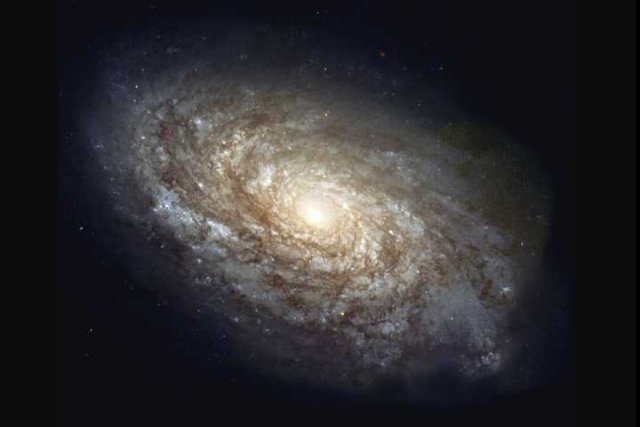In 1995, Hubble observed this majestic spiral galaxy, known as NGC 4414, as part of a key astronomical mission to accurately determine distances of many galaxies from Earth. The key was to find stars that vary in brightness. Called Cepheids, astronomers use these stars as standard distance indicators. Knowing distances allows astronomers to more accurately determine the universe's rate of expansion. This value is used to calculate distances, sizes, and the luminosity of other objects in the universe, as well as the age of the universe itself. However, the observation was incomplete. Given the galaxy's very large size, Hubble could only view half the galaxy, requiring a return visit to capture the other half. In 1999, the telescope did just that, producing this stunning, full-color portrait. The new image shows that the central region of the galaxy is typical of most spiral-shaped galaxies: it contains mostly yellow and red stars, an indication that they are much older than the blue-colored stars residing in the galaxy's spiral arms. The arms also are rich in interstellar dust, which is seen as dark patches and streaks silhouetted against the starlight. |

